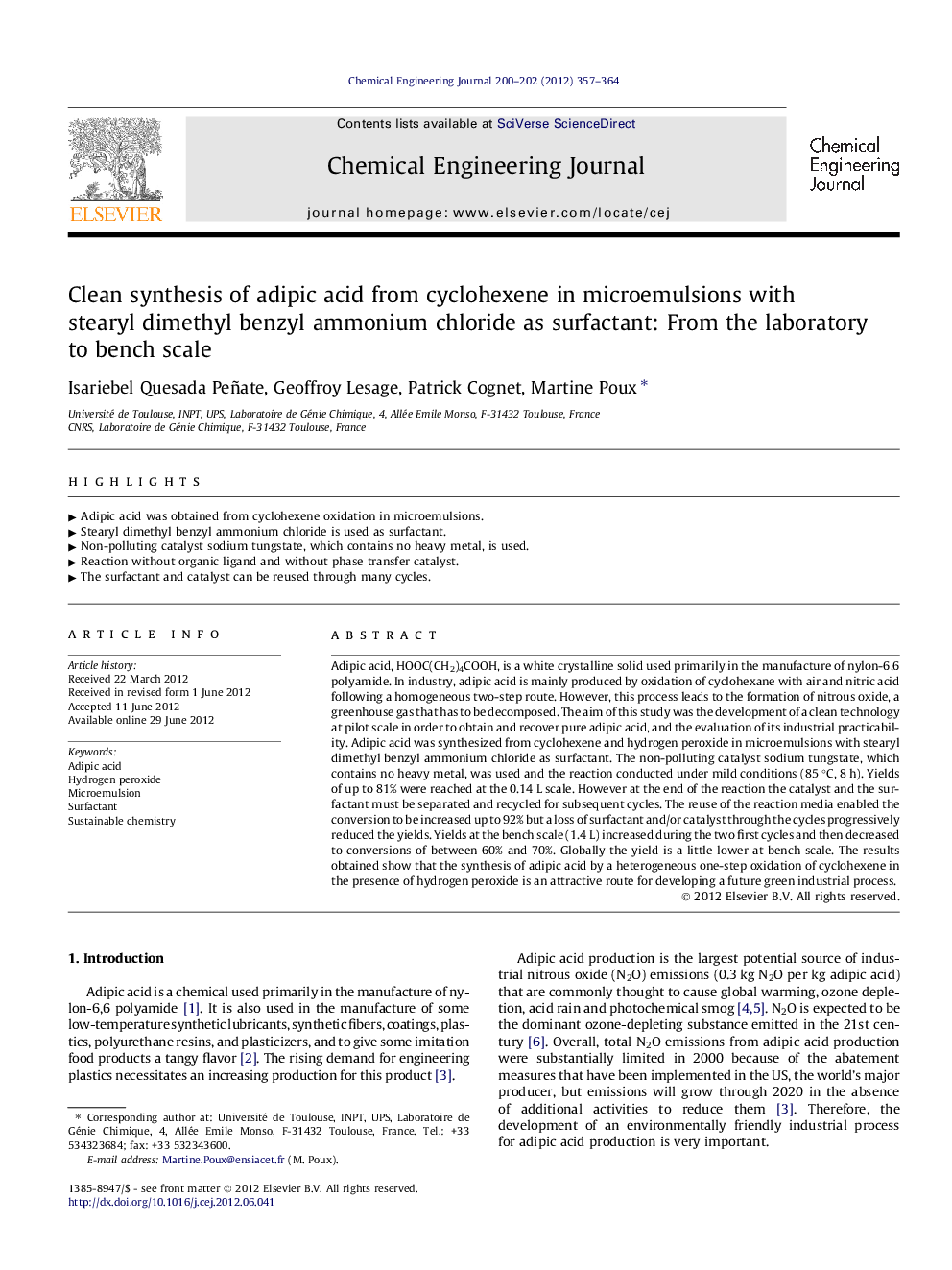| Article ID | Journal | Published Year | Pages | File Type |
|---|---|---|---|---|
| 149591 | Chemical Engineering Journal | 2012 | 8 Pages |
Adipic acid, HOOC(CH2)4COOH, is a white crystalline solid used primarily in the manufacture of nylon-6,6 polyamide. In industry, adipic acid is mainly produced by oxidation of cyclohexane with air and nitric acid following a homogeneous two-step route. However, this process leads to the formation of nitrous oxide, a greenhouse gas that has to be decomposed. The aim of this study was the development of a clean technology at pilot scale in order to obtain and recover pure adipic acid, and the evaluation of its industrial practicability. Adipic acid was synthesized from cyclohexene and hydrogen peroxide in microemulsions with stearyl dimethyl benzyl ammonium chloride as surfactant. The non-polluting catalyst sodium tungstate, which contains no heavy metal, was used and the reaction conducted under mild conditions (85 °C, 8 h). Yields of up to 81% were reached at the 0.14 L scale. However at the end of the reaction the catalyst and the surfactant must be separated and recycled for subsequent cycles. The reuse of the reaction media enabled the conversion to be increased up to 92% but a loss of surfactant and/or catalyst through the cycles progressively reduced the yields. Yields at the bench scale (1.4 L) increased during the two first cycles and then decreased to conversions of between 60% and 70%. Globally the yield is a little lower at bench scale. The results obtained show that the synthesis of adipic acid by a heterogeneous one-step oxidation of cyclohexene in the presence of hydrogen peroxide is an attractive route for developing a future green industrial process.
► Adipic acid was obtained from cyclohexene oxidation in microemulsions. ► Stearyl dimethyl benzyl ammonium chloride is used as surfactant. ► Non-polluting catalyst sodium tungstate, which contains no heavy metal, is used. ► Reaction without organic ligand and without phase transfer catalyst. ► The surfactant and catalyst can be reused through many cycles.
